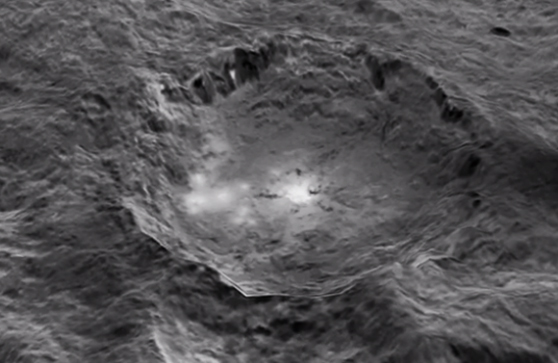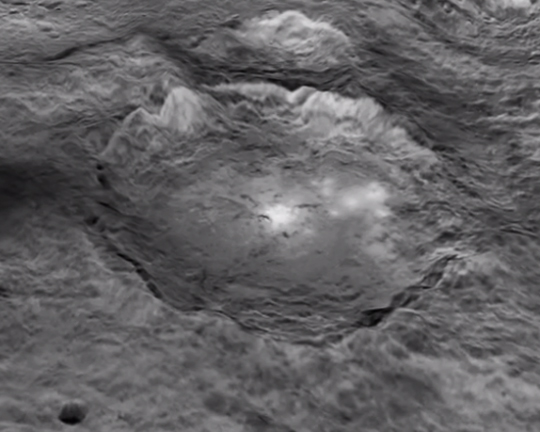“Scientists have not yet determined what it is about the composition
or structure of the bright spots that is responsible for their extreme brightness. ...To discover their real nature, we need to get more data from lower altitudes.”
- Marc Rayman, Ph.D., Director, Dawn mission orbiting Ceres

August 9, 2015 Pasadena, California - NASA/JPL's DAWN spacecraft team now calls the Ceres crater of mysterious bright spots Occator (oh-KAH-tor), one of twelve “assistant gods” to Ceres of Greek lore. Occator is the one that harrows the ground with heavy metal breaking up dirt clods, removing weeds and covering seeds.

In an August 6, 2015, newly released NASA/JPL video produced from DAWN spacecraft's data, Marc Rayman, Dawn Mission Director, asks,“How can you not be mesmerized by those glowing spots?" (See 080615 NASA video below).
Click here to subscribe and get instant access to read this report.
Click here to check your existing subscription status.
Existing members, login below:
© 1998 - 2025 by Linda Moulton Howe.
All Rights Reserved.

